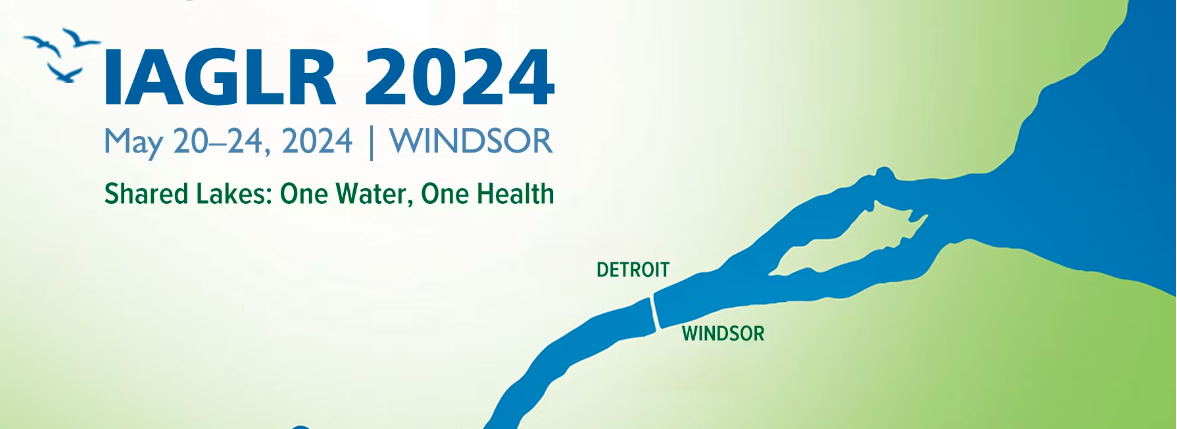Duluth, Minn. — Oil spills in freshwater bodies may be less publicized than spills in oceans even though freshwater oil spills are more frequent and often more destructive to the environment (Environmental Protection Agency). An oil spill in any one of the Great Lakes or its thousands of tributaries has the potential to affect drinking water, animals, plants, ecosystems, and infrastructure in other surface waters and other Great Lakes.
The "Oil Spill Science in the Great Lakes: One Water, Many Perspectives" session at the International Association for Great Lakes Research 67th Annual Conference on Great Lakes Research is where people who know or what to know about freshwater oil-spill science will be gathering May 20-24, 2024.
"There is significantly less freshwater oil-spill science as compared to marine oil-spill science," said Kelsey Prihoda, Sea Grant Great Lakes transportation extension educator, Hazardous Materials Transport Outreach Network (HazMaTON) lead, and IAGLR session co-chair. "The network of people who work on freshwater oil spills is small, so this session is an important opportunity for us to share information and identify research needs."
The session is designed for natural resource managers, representatives from the energy industry, scientists, and outreach educators to learn about ongoing freshwater oil-spill science. Attendees will also have opportunities to share data with oil-spill response organizations, emergency managers, and other state, tribal, and federal practitioners across the region and identify where more research is needed. The hybrid conference will be hosted by the International Association for Great Lakes Research in Windsor, Ontario, Canada.
HazMaTON is a collaborative of specialists from the Great Lakes, Lake Champlain, Hudson River and St. Lawrence River regions focused on reducing risks associated with multiple modes of oil and other hazardous material transportation. The collaborative is committed to the dissemination of accurate, neutral, and data-driven information through education, outreach and relationship building in order to improve public safety, the region’s economy and environmental stewardship of our water resources. HazMaTON is supported by the eight Great Lakes Sea Grant programs.
"It’s been a while since we’ve had a major spill in the Great Lakes," Prihoda said. "Oil spills may be one-time events, but the impacts are long-lasting and clean-up can take years."
The 2010 Kalamazoo River spill, which was the largest land-based oil spill in U.S. history, cost $1.2 billion and took five years to clean up. The high costs were driven in part by the composition of the oil, which caused it to initially float on top of water but eventually sink to the bottom, according to a Columbia Law School article.
The behavior of crude oil in freshwater environments, like the Kalamazoo River, is one of the topics addressed in the session. Other presentations in the session will address products that break down oil and promote biodegradation, effects of oils deposited in bottom sediment on microbial communities, pros and cons of oil skimming, how to map and track spills, coatings to protect shorelines, nanobubbles for sand cleanup, behavior of bio-derived oils in water, and response strategies.
"The long-term outcome from this conference is to have industry, researchers, and regulators better connected so that we can focus our work on what science is needed to more effectively respond to spills in freshwater environments," said Prihoda. "The transportation of hazardous materials is not going away and we need to be prepared to address spills."
The IAGLR session is a collaboration of the Hazardous Materials Transport Outreach Network, led by Minnesota Sea Grant, and the Natural Resources Canada Multi-Partner Research Initiative.
ADDITIONAL INFORMATION
- The Oil Pollution Act of 1990, passed by Congress and signed into law by President George H.W. Bush in response to the Exxon Valdez oil spill of 1989, gave NOAA and other agencies the authority to address impacts to natural resources caused by oil spills in U.S. waters and shorelines and to hold polluters accountable.
- The Oil Pollution Act of 1990: History of Spills and Legislation Oil Spills at the Water Surface (NOAA)
- Oil Spills in Rivers (NOAA)
- How is an Oil Spill in a River Different Than One in the Ocean? (NOAA)
- A Field Guide to Oil Spill Response on Freshwater Shorelines (Environment and Climate Change Canada)
Minnesota Sea Grant is a systemwide program of the University of Minnesota and one of 34 federal-university Sea Grant partnerships across the country that bring applied water science to communities. MNSG has staff and offices on the Duluth and St. Paul campuses. Our extension educators, researchers and communicators work with community members, local decision-makers, policy leaders, and personnel from resource agencies, business and industry to enhance the use and conservation of Great Lakes and Minnesota’s inland water resources to create strong and sustainable economies, healthy environments, and resilient and inclusive communities.
CONTACTS:
Kelsey Prihoda, Great Lakes Transport Extension Educator, Minnesota Sea Grant, University of Minnesota and University of Minnesota Duluth, priho011@d.umn.edu.
Marie Thoms, communications manager, Minnesota Sea Grant, University of Minnesota and University of Minnesota Duluth. methoms@d.umn.edu
